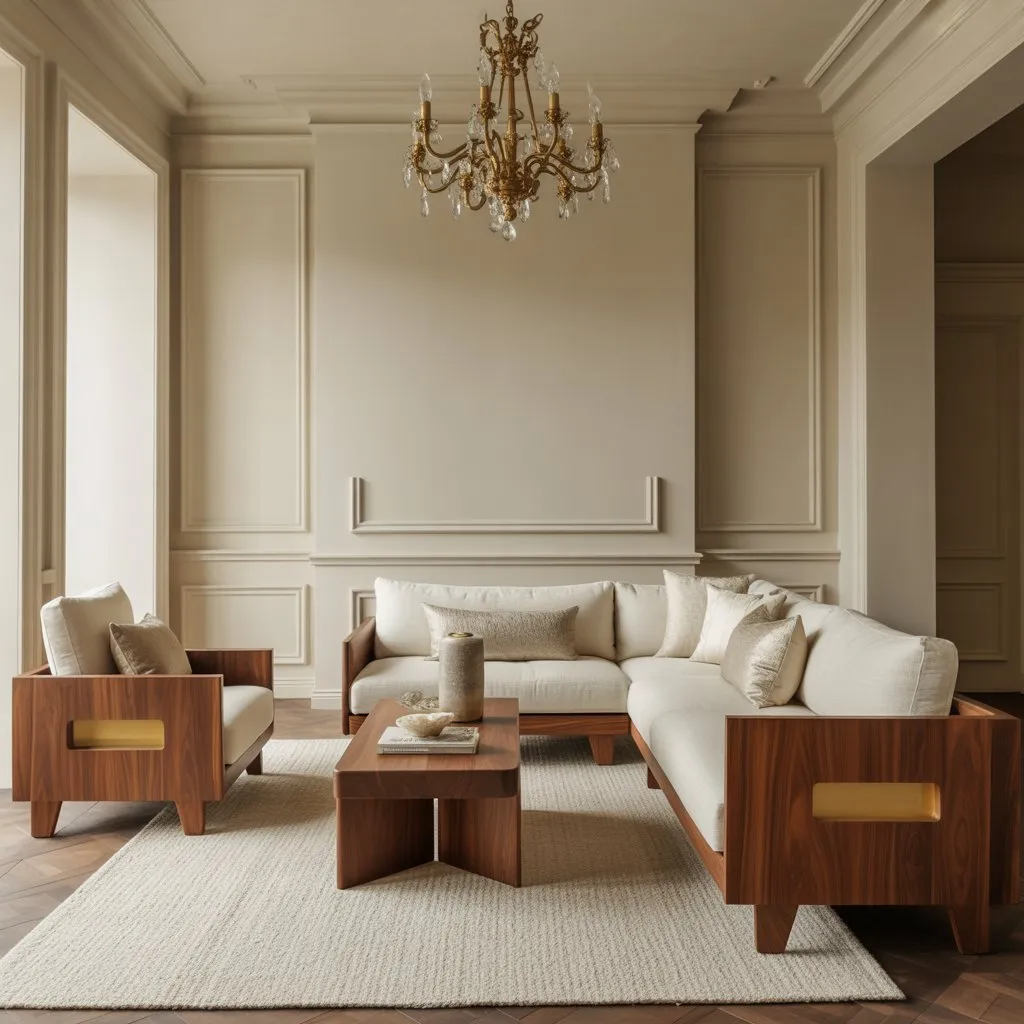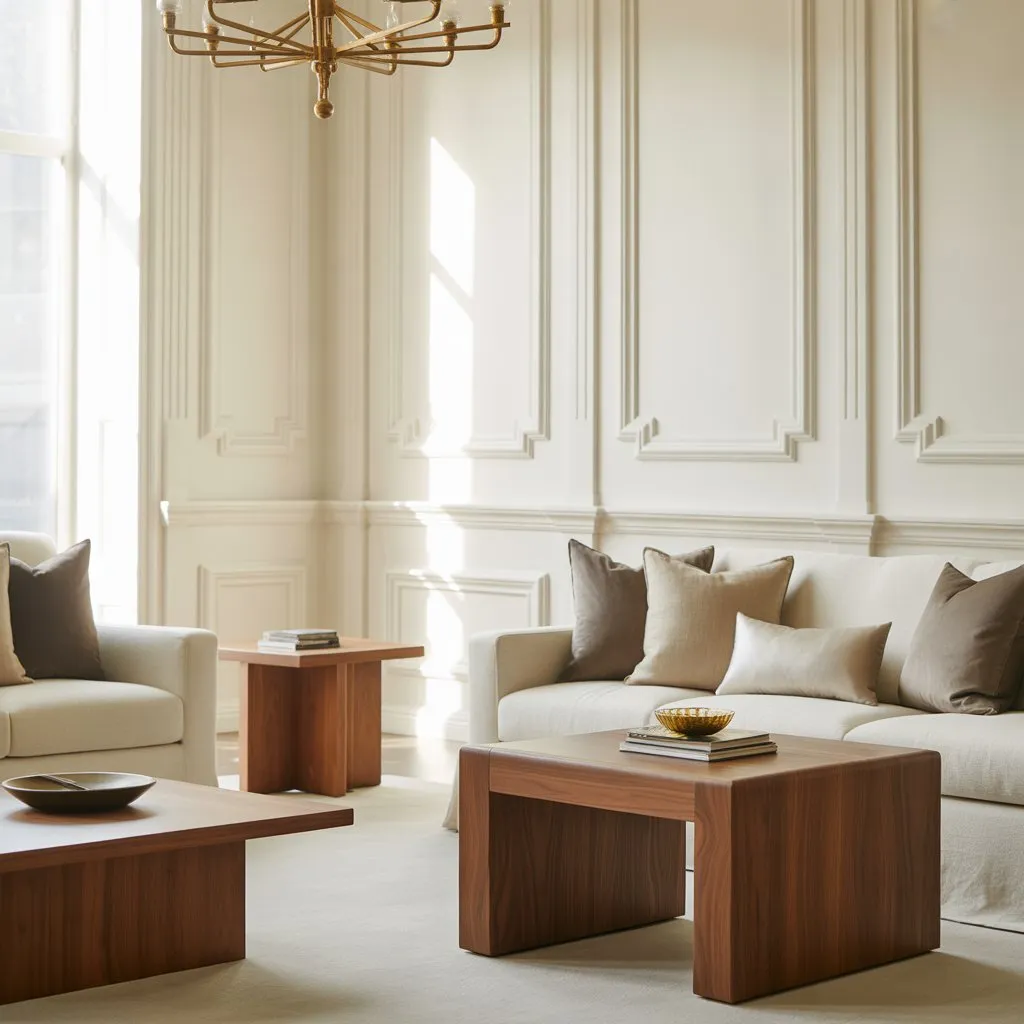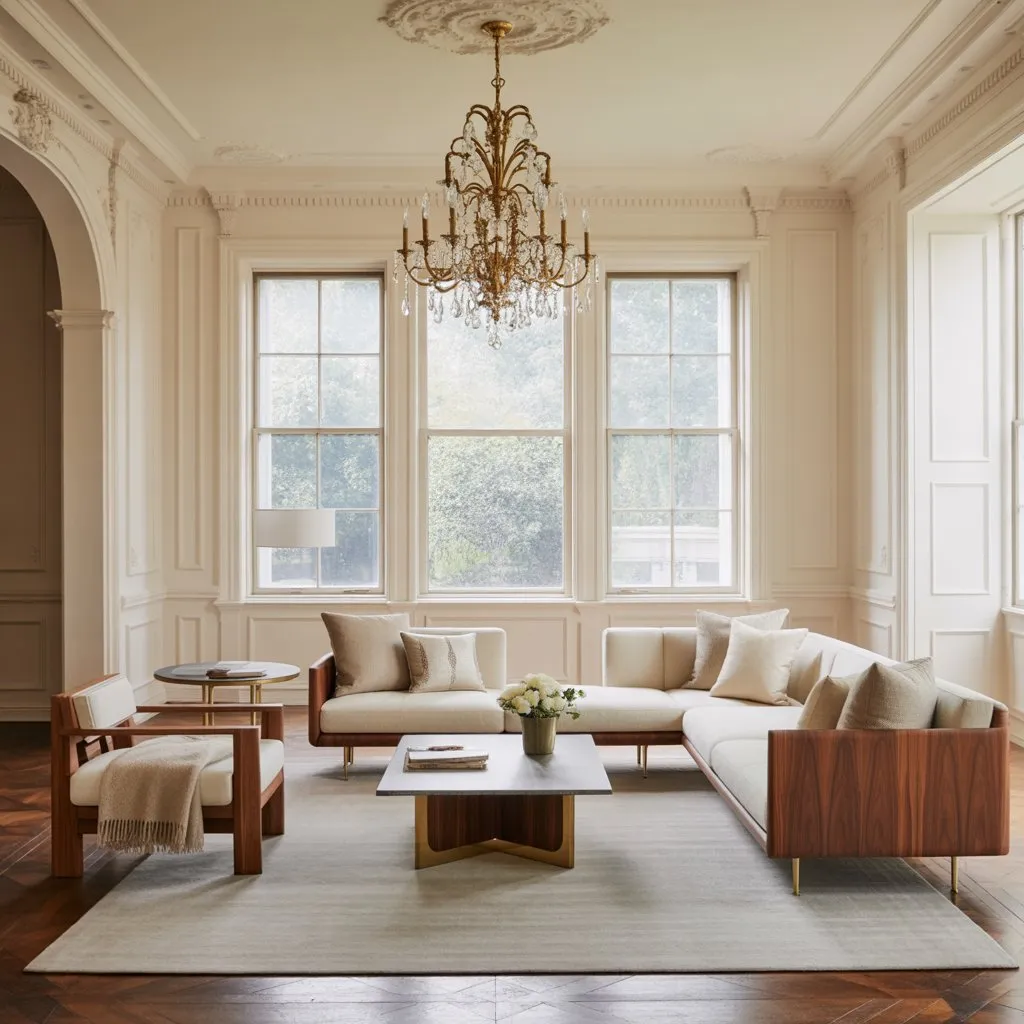Our Location
304 North Cardinal St.
Dorchester Center, MA 02124

In the ever-evolving world of home décor, modern traditional interior design stands out as a style that perfectly blends the charm of the past with the comfort of the present. This design philosophy merges timeless architectural details, elegant furnishings, and contemporary touches to create spaces that feel both classic and current. Unlike minimalism, which can sometimes feel cold, or maximalism, which can be overwhelming, modern traditional interior design offers balance — warmth, refinement, and modern practicality.
At its core, modern traditional interior design combines traditional interior design elements — such as symmetry, classic furniture, and ornamental details — with the clean lines and simplicity of modern interior design. This style is also known as transitional or classic modern interior design, and it focuses on blending two design worlds seamlessly.
The modern traditional interior design style draws inspiration from historical architecture and European craftsmanship, adding modern updates like minimalist lighting, sleek finishes, and contemporary layouts. The result is an interior that feels timeless, inviting, and elegant — without being stuffy or outdated.
Modern vs. Traditional Interior Design
It’s no wonder why modern traditional homes interior design has become a global favorite — seen from modern traditional European interiors to modern traditional Japanese interior design and even modern traditional Indian interior design.

While there’s no strict formula, certain key features define the modern traditional interior design style. These principles ensure every space looks timeless and cohesive.
The heart of modern meets traditional interior design lies in creating a sense of equilibrium between eras. It’s about contrast done right — combining the warmth of old-world charm with the sophistication of modern comfort. For example:
In modern traditional house interior design, you might see Victorian crown moldings juxtaposed with clean-lined sofas, or rustic beams accenting modern open layouts. This dynamic pairing makes the space inviting and interesting.
The best modern traditional interior designers know how to maintain simplicity while embracing decorative richness. Straight lines and geometric forms dominate modern design, but they’re softened here by elegant curves or sculptural elements. The key is restraint — using traditional motifs without overwhelming the space.
Wood remains a cornerstone of traditional interior design, and in this hybrid style, it shines through beautifully. Think walnut cabinetry, oak floors, and mahogany tables paired with modern marble, metal, or glass accents. These natural materials add authenticity and tactile warmth, essential for the cozy feeling modern traditional home interiors are known for.
Modern traditional kitchen interior design, for instance, often combines natural stone counters with wood-paneled cabinetry. Meanwhile, modern traditional bathroom design might feature marble tiling and brass hardware — timeless yet fresh.
Unlike ultra-modern interiors that favor minimal surfaces, modern traditional interior design ideas celebrate layers — in fabrics, patterns, and materials. You might mix linen with velvet, silk with wool, or juxtapose smooth marble against rough brick. This creates depth and personality.
Examples include:
Neutral color schemes — ivory, beige, taupe, and gray — dominate modern traditional homes, but pops of rich color like emerald green, navy blue, or terracotta inject vibrance. This balance keeps interiors serene but never dull.
Modern traditional home interior design relies on tone layering — for instance, combining beige walls, a charcoal sofa, and gold-framed artwork. Such color strategies are often highlighted in modern traditional interior design books and professional guides.

Let’s explore how this style unfolds across various spaces in the home.
The modern traditional living room is all about comfort with sophistication. Use plush sofas, tufted ottomans, and statement lighting fixtures. Mix modern artwork with antique frames or balance sleek metallic lamps with warm wooden coffee tables.
To perfect the balance:
Designers often showcase modern traditional living room transformations where old chandeliers meet clean-lined furniture — creating a polished yet livable space.
In modern traditional kitchen interior design, the focus is both functionality and warmth. Shaker-style cabinets with minimalist handles, stone countertops, and farmhouse sinks all work beautifully. Add modern pendant lights and sleek hardware for an updated twist.
Examples of modern traditional kitchen designs often feature open shelving displaying vintage ceramics alongside stainless-steel appliances — bridging old and new effortlessly.
The modern traditional bedroom interior design focuses on comfort and calm. Upholstered headboards, neutral tones, and layered linens define the style. Pair wooden nightstands with contemporary lamps and mix traditional wall panels with modern artwork.
If you want a moody modern traditional bedroom, consider darker palettes — charcoal, navy, or forest green — with brass or gold accents for a sophisticated, cocoon-like atmosphere.
Modern traditional bathroom design combines timeless elegance with practicality. Classic tiles, marble vanities, and vintage mirrors pair beautifully with modern fixtures and lighting. Add soft textures — like plush towels or rattan baskets — for a cozy, spa-like vibe.
The beauty of modern traditional interior design lies in its flexibility — it’s not bound by region or culture. Around the world, designers reinterpret this timeless style in ways that reflect their heritage while embracing modern living. Let’s explore a few global variations that demonstrate the adaptability of modern traditional interiors.
Europe remains the heart of modern traditional home design, blending centuries-old craftsmanship with modern sensibilities. You’ll often see French country elegance, Italian luxury, or English classicism merged with minimalist Scandinavian influence.
Key Features Include:
In modern traditional European interiors, balance is achieved through refinement. Designers focus on quality materials and timeless décor, resulting in a space that feels grounded yet elevated.
In Japan, the modern traditional interior design style harmonizes minimalism with cultural authenticity. Traditional tatami mats, shoji screens, and wood accents are preserved, but modern touches like clean lighting and glass partitions are added for contemporary appeal.
This blend creates serenity — a peaceful retreat from the outside world. The Japanese approach teaches that modern traditional home interior design isn’t about excess but about mindful balance and spatial calm.
In India, tradition meets modernity through color, texture, and symbolism. You’ll find modern traditional interiors that feature carved wooden furniture, brass décor, and handwoven fabrics — paired with clean white walls, modular furniture, and open layouts.
Popular Elements:
This interpretation of modern traditional interior design in India celebrates heritage without sacrificing contemporary comfort.

Mastering modern meets traditional interior design requires balance. If you lean too modern, the warmth fades; too traditional, and it feels dated. Here’s how to achieve the perfect blend for a timeless home.
One of the biggest mistakes people make is mixing pieces that don’t align in proportion. For instance, pairing an oversized antique cabinet with ultra-sleek low-profile furniture can throw off the visual flow.
Instead, keep the scale consistent — large with large, delicate with delicate — so your modern traditional home interior design feels cohesive and well-thought-out.
Color is the bridge between eras. Choose a neutral color palette as your base (whites, beiges, soft grays) and then layer traditional hues like navy, emerald, or burgundy for richness.
For instance, in a modern traditional living room, a beige wall with a classic Persian rug and sleek gray sofa strikes perfect harmony. The mix feels effortless yet intentional.
A successful modern traditional interior design style often features a thoughtful mix of materials. Combine the softness of linen with the hardness of marble, or the rusticity of wood with the shine of metal.
Common pairings include:
Layouts in modern traditional homes are typically open, emphasizing comfort and flow. However, classic details — such as wainscoting, arches, or ceiling trims — keep the charm alive.
A modern traditional kitchen might have open shelving and built-in pantries, while a modern traditional bedroom could showcase a traditional chandelier above a clean-lined bed. This merging of eras gives the home a sense of continuity and timelessness.
You don’t need an entire room of antiques. Instead, select one or two statement vintage items — a carved mirror, an antique trunk, or a classic armchair — and surround them with modern elements. This approach makes the design feel curated rather than cluttered.

Color and lighting define mood — and in modern traditional interior design, they create an atmosphere of warmth and sophistication.
The backbone of this design style lies in neutral shades: off-white, beige, cream, and soft taupe. These tones provide a timeless backdrop for both modern and classic pieces to shine.
Once your foundation is set, add depth through accent colors. Jewel tones like emerald, ruby, and sapphire — or earthy hues like terracotta and olive — can add visual richness without overpowering.
For example:
Lighting plays a crucial role in merging modern and traditional styles. The right mix creates visual interest and defines ambiance.
Design Tips:
Layering multiple light sources — ceiling fixtures, lamps, and accent lighting — ensures every corner of your modern traditional home interior glows naturally.
The tactile quality of modern traditional interior design makes it comforting and human. Unlike ultra-modern spaces that sometimes feel sterile, this style invites touch and visual exploration.
Use natural fabrics like linen, cotton, silk, and velvet. They not only enhance texture but also evoke the craftsmanship of traditional décor.
Patterns are the soul of traditional design, but in modern settings, moderation is key. Stripes, florals, damask, and geometric motifs can coexist beautifully when applied thoughtfully.
Example combinations:
Wood, metal, glass, and stone all play a role. The secret lies in layering textures to achieve visual balance. For instance:
This careful orchestration results in spaces that are sophisticated yet approachable — the essence of modern traditional home interiors.
The furniture in modern traditional interior design acts as a bridge between two eras — classic sophistication and modern simplicity. The goal is to achieve visual harmony through shape, material, and function.
Pro Tip: In open-plan homes, balance large furniture with statement lighting or rugs to maintain visual proportion.
Accessories are the finishing touches that transform a house into a home. In modern traditional décor, details matter — they create rhythm, warmth, and personality.
Balance Tip: Don’t over-accessorize. The key to modern traditional interior design is restraint — let each piece breathe while still contributing to the story of your home.
Sustainability is a natural extension of this timeless style. The modern traditional design philosophy encourages longevity and quality over trends — a sustainable approach to living.
Incorporate antique furniture and repurposed wood items instead of buying new. Vintage furniture not only reduces waste but also adds soul to your space.
Opt for local craftsmen and regionally available materials. This reduces carbon footprint while celebrating local artistry — aligning perfectly with the spirit of modern traditional design.
Avoid synthetic fabrics. Choose cotton, wool, silk, or linen for curtains and upholstery. Use low-VOC paints and water-based finishes for eco-friendly interiors.
By choosing sustainable modern traditional décor, you create a home that’s not just beautiful, but ethical and enduring.
Adopting modern traditional interior design doesn’t require a full renovation. You can transform your home gradually with smart choices and design layering.
Paint your walls in neutral shades like ivory, beige, or soft gray. These timeless hues form the backdrop that allows both modern and classic elements to stand out.
Buy fewer but higher-quality pieces. A traditional sofa, a modern coffee table, or an antique sideboard can become focal points in your modern traditional living room.
Incorporate wainscoting, crown molding, or arched doorways to infuse your space with heritage character.
Lighting defines mood. Mix traditional chandeliers with modern recessed lighting to create balance.
Combine glossy and matte finishes, hard and soft surfaces, and light and dark tones. This dynamic contrast brings your modern traditional home interior to life.
Blend sentimental décor, heirlooms, or travel souvenirs into your design. They make your home truly yours while adding warmth to modern spaces.
The modern traditional interior design style is more than a visual trend — it’s a philosophy of living gracefully between two worlds. It honors craftsmanship, timeless beauty, and comfort while embracing the convenience of modern design.
By fusing old and new, you create a home that feels rich with history yet fresh with contemporary appeal. Whether you’re redesigning a modern traditional bedroom, curating a cozy modern traditional living room, or updating your modern traditional kitchen, remember — balance is the key.
In the end, modern traditional design is not about following rules but finding harmony. It’s about living in spaces that feel both familiar and inspiring, blending nostalgia with modern simplicity — truly the best of both eras.
Modern traditional interior design is a balanced blend of classic elements — like symmetry, moldings, and antiques — with modern simplicity and functionality. It brings warmth and elegance without feeling old-fashioned.
Start by keeping your existing furniture and updating accessories. Repaint walls in neutral tones, add one or two vintage pieces, and replace lighting fixtures with transitional styles. Affordable textiles and rugs can transform any space.
Neutral colors like white, beige, and gray form the base, with accent tones such as navy, emerald, terracotta, or gold. These colors enhance the warmth and sophistication of modern traditional home décor.
Yes! The key is proportion and balance. For example, pair a traditional sofa with a modern coffee table or mix a sleek bed frame with ornate nightstands. Contrast creates visual interest.
The style’s strength lies in its adaptability. It merges comfort, craftsmanship, and clean lines — ensuring it never goes out of fashion. Whether your home is urban or countryside, modern traditional design remains effortlessly elegant.
Modern Traditional Interior Design Modern Traditional Interior Design Modern Traditional Interior Design
Related Article: What Is Radiation in Interior Design – A Best Complete Guide 2025